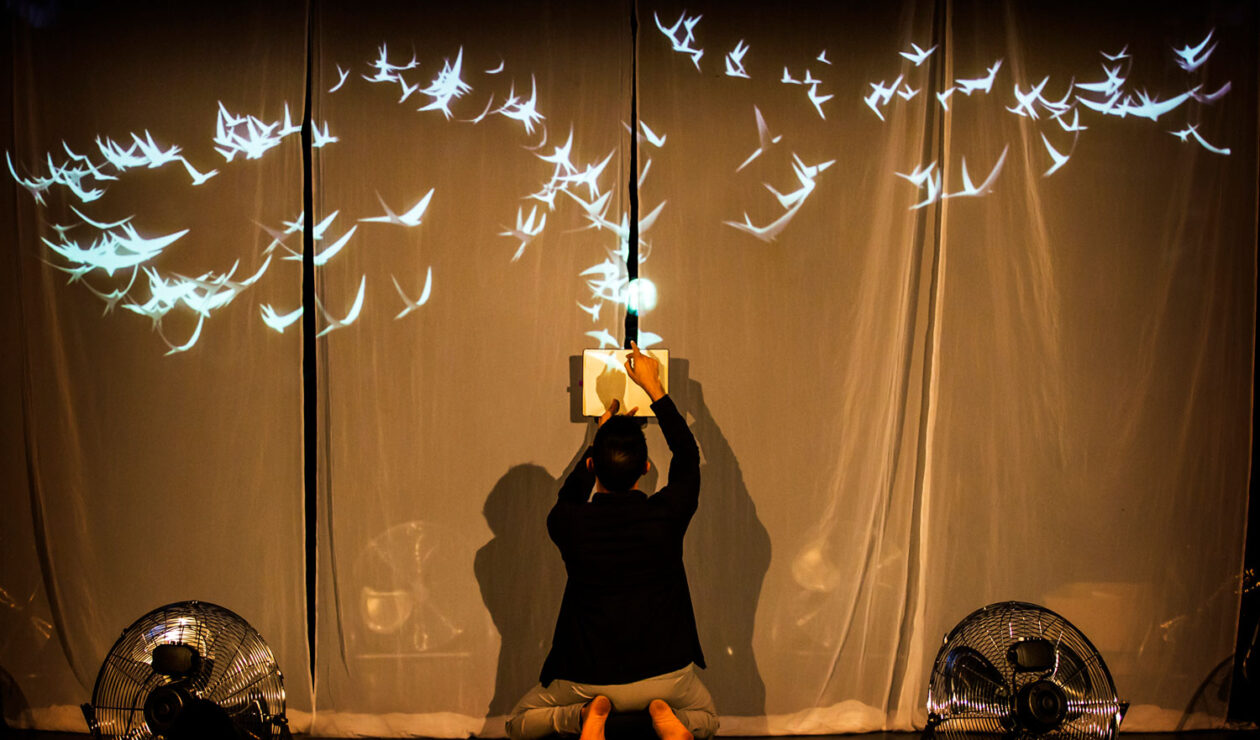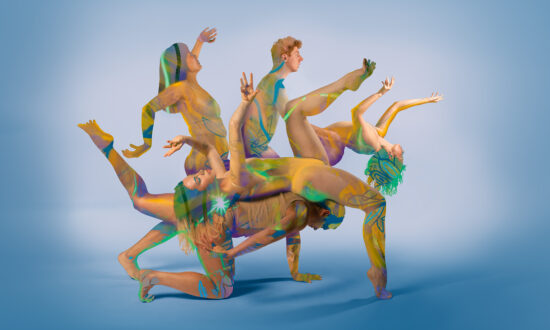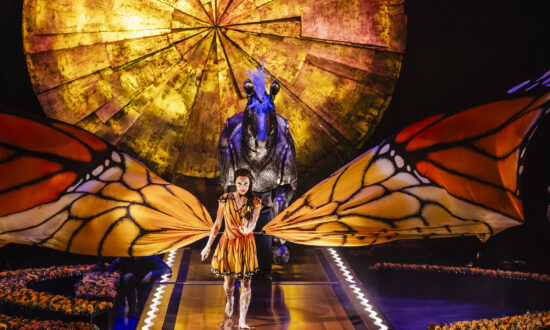“How long does it take to correct a mistake?” asks the dancer, reading from a diagnostic report. For Leicester-based choreographer Aakash Odedra, whose lived experience of dyslexia inspired Little Murmur, it took more than a decade: he was 21 when he found he’d been spelling his own name incorrectly.
This compact but powerful contemporary dance work, created in collaboration with South Australian choreographer Lewis Major, is the younger sibling of Odedra’s 2014 full-length production Murmur 2.0. It is currently touring Australia, with a particular focus on sharing its message with school groups and young people.
Little Murmur is a solo piece, performed here by Subhash Viman Gorania. As he takes us through the stages of emotion that accompany the experience of navigating “a world you struggle to process”, his elegance and precision never falter.
At first, while reading the report containing his diagnosis, he seems to move by compulsion from an external force, his steps recalling the repetition of rote learning. Later, Gorania kicks and jabs in a light-footed sparring match with a digital animation. He is adept at timing his steps to give the appearance of seamless interaction with the projections that appear on white sheets in the centre of the stage.
After recounting the story of recovering the missing “A” from his name and the sense of control it granted, the performer’s movements take on a classical, clockwork smoothness. As he sketches the lines and sharp angles of the letter with his hands, he might almost be an orchestral conductor. Indeed, it is often Gorania’s expressive hands that draw focus throughout the performance, as they twist and flutter like starlings or sheets of paper in the wind.

Get InReview in your inbox – free each Saturday. Local arts and culture – covered.
Thanks for signing up to the InReview newsletter.
For most of the show, he dances inside a ring of electric fans. Following a moving sequence in which pieces of white paper fall from the ceiling faster than a frantic Gorania can catch them, the fans suddenly switch on, whipping the fallen sheets into a dancing flurry or murmuration (the collective noun for a flock of starlings). It’s a simple but clever bit of staging, and it works beautifully. The final image of the dancer spinning amid the paper snowstorm is a memorable one.
The soundscape of Little Murmur is varied, ranging from soft strings, to percussive mechanical beats, to the chant of murmuring voices. Moments of complete silence are also used to strong effect in particularly poignant scenes, while stark spotlights on the performer evoke the anxiety of enduring examination.
Students will find this work an engaging and accessible introduction to contemporary dance and to the issues explored here. But you don’t have to be in school to be moved by Little Murmur, or to come away with a new perspective on living with learning difficulties.
Presented by Aakash Odedra Company, Lewis Major, and The Spark Arts for Children, Little Murmur is at the Adelaide Festival Centre’s Space Theatre from August 21-24.
Support local arts journalism
Your support will help us continue the important work of InReview in publishing free professional journalism that celebrates, interrogates and amplifies arts and culture in South Australia.
Donate Here



